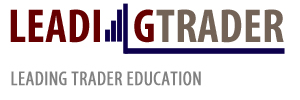I was wrong.
I made a foolish mistake. And it cost us profits.
I am sorry. I should know better by now…
If you want to get better at trading or investing, you need to analyze your mistakes. That way, you don’t make them again.
Let me explain to you what I did, and how I hope to do better next time…
As I mentioned, you should examine every trade you make – both the winners and the losers – to see how you could improve it for next time.
The most important lessons will come from your losers. Then you will become a better trader.
If you learn from your mistakes, the market’s “piranhas” will only bite you once. (The market unfortunately has a lot of “piranhas”).
Last week, I made a major error…
You see, I told my premium members that I was going long on the USDCAD currency pair at the 1.3080 to 1.30 levels (see chart below). In case you’re not familiar with currencies, USDCAD is the US Dollar versus the Canadian Dollar.
This trade started to work well and at the beginning we went into a small 100 point (pip) profit – here’s the chart:

The mistake I made is when I then told our members that I was going to move my stoploss up above 1.30. Here’s what I said last Tuesday:
“Let’s start to move stops higher to just below the recent lows, at 1.3023. This at least reduces our risk.”
I was so focused on reducing risk that I forgot one of my own golden rules:
Never place a stoploss at an obvious place on the chart, because high frequency traders can target that level and take your stop out.
High frequency traders (or HFTs) are very sophisticated computers that can make decisions in milliseconds.
These HFTs “know” at what point you have entered the market and where you have placed your stoploss.
One of the main things about HFTs is that they love to take out stops.
You see, the stops that are placed by traders provide HFTs with pockets of liquidity, which they target very frequently before proceeding to go in the original direction.
My mistake – as shown by the above chart of USDCAD – is that I moved my stoploss up too soon above a key psychological support level at 1.30.
In hindsight, I should have kept my stoploss BELOW support and under 1.30 – perhaps somewhere more obscure just below 1.2950 – until our trade was in the clear.
If we had kept the stoploss below 1.30, then right now we would now have been in a decent 230 point (pip) profit on USDCAD, and moved stops higher to breakeven.
Of course, there is no guarantee that this kind of action will always keep you safe from HFTs. But at least it helps you by lowering the odds that you will be stopped out prematurely by HFT activity.
Notice how the price took out the previous lows, only for it to immediately reverse and go higher in our intended direction.
